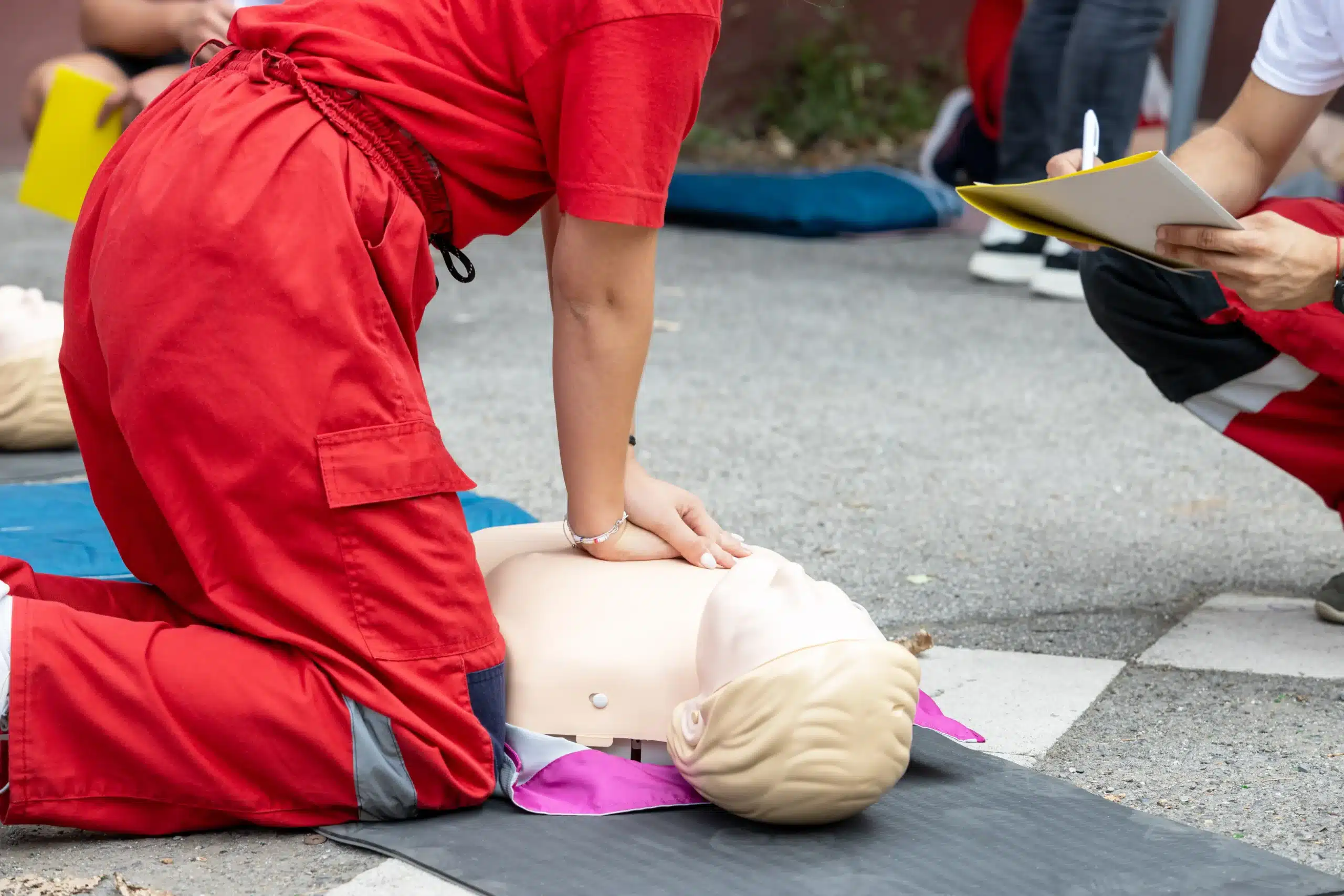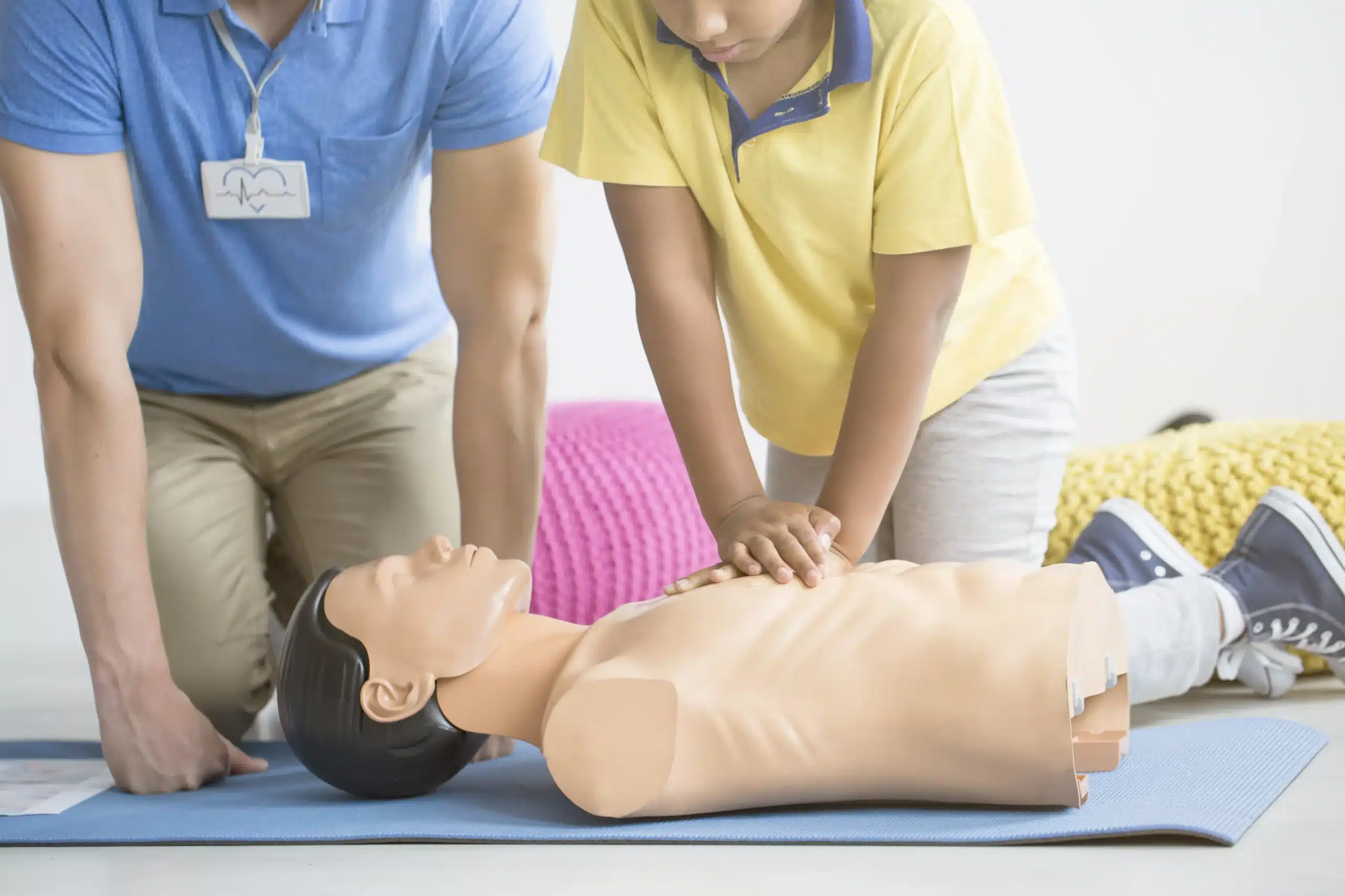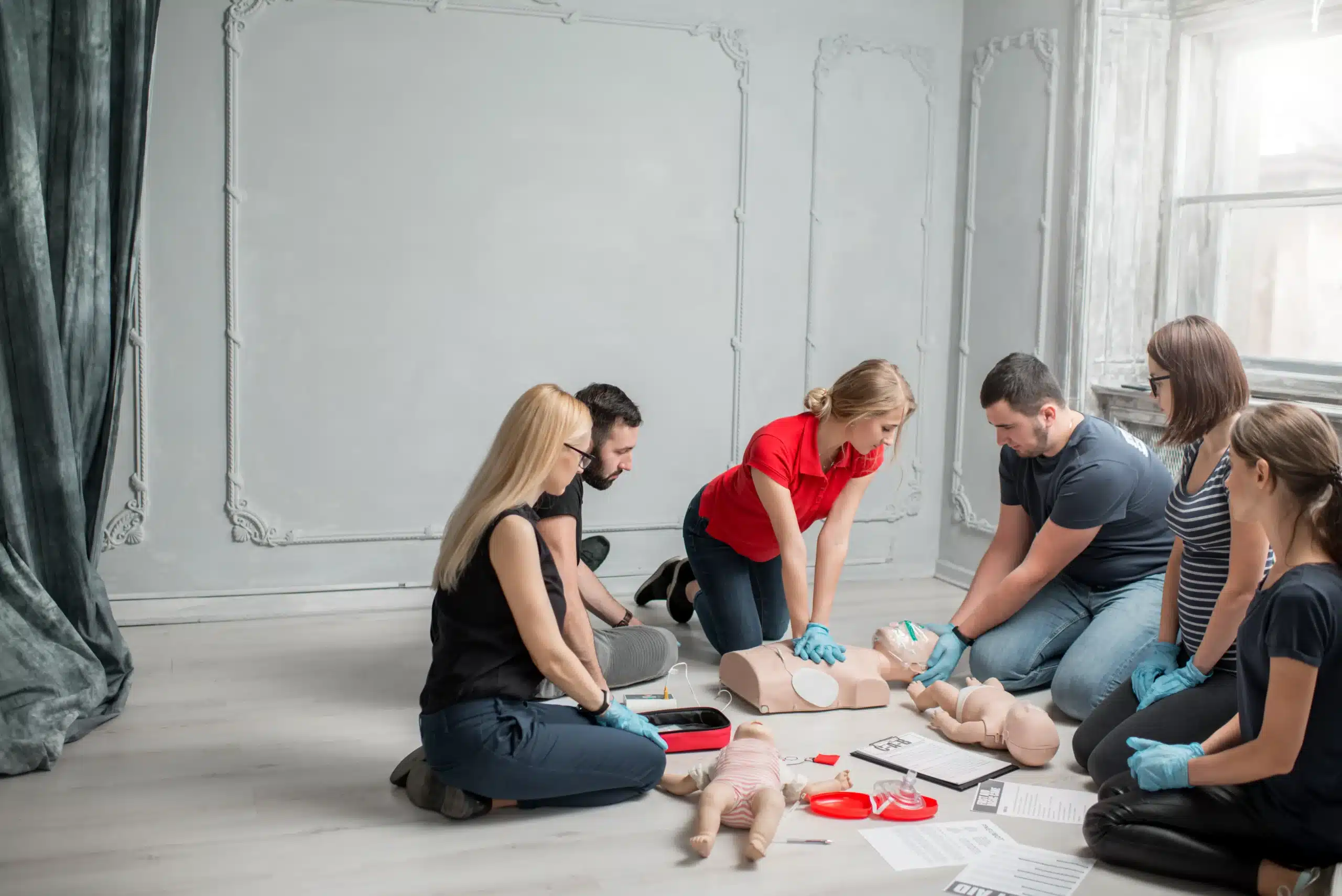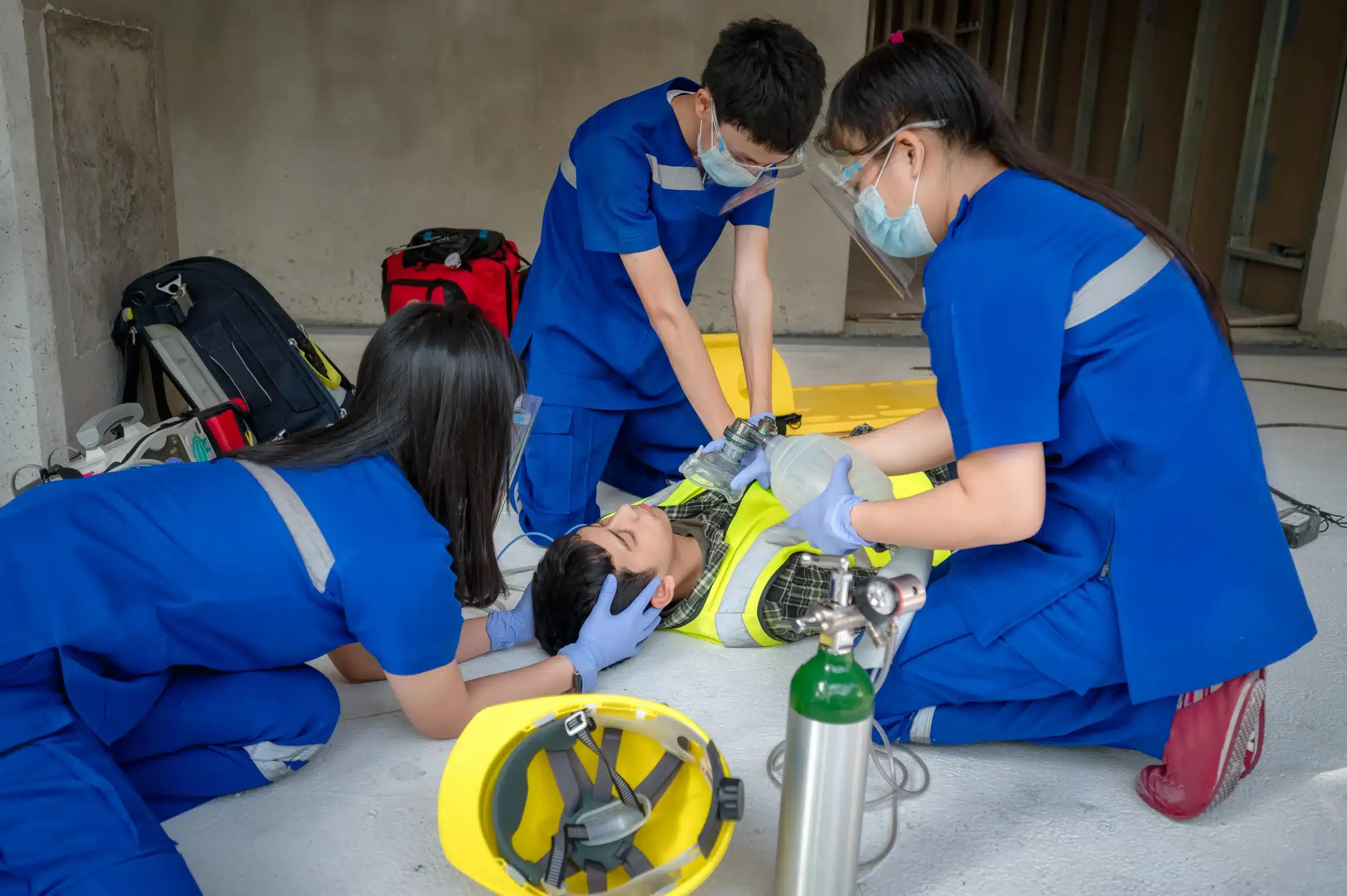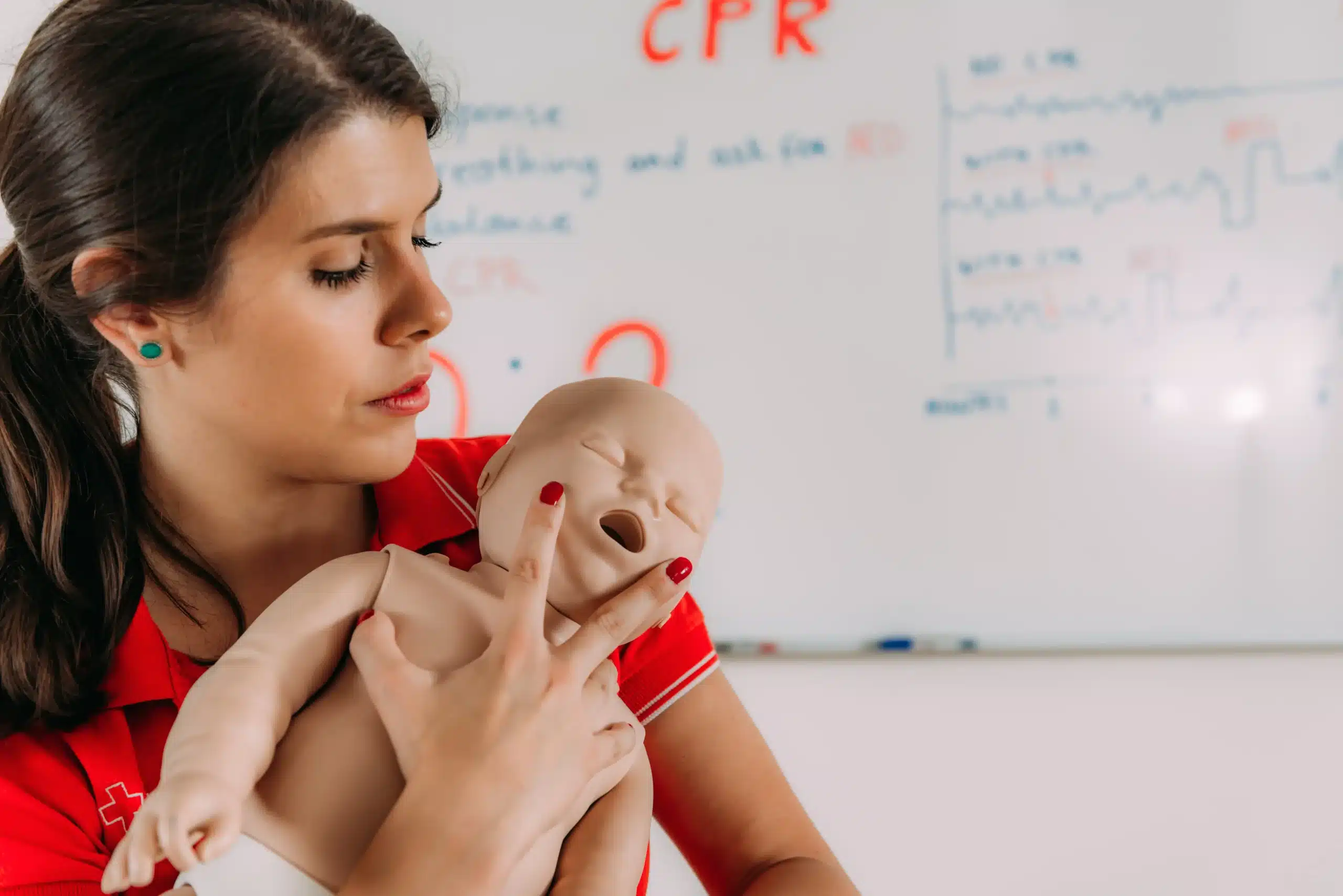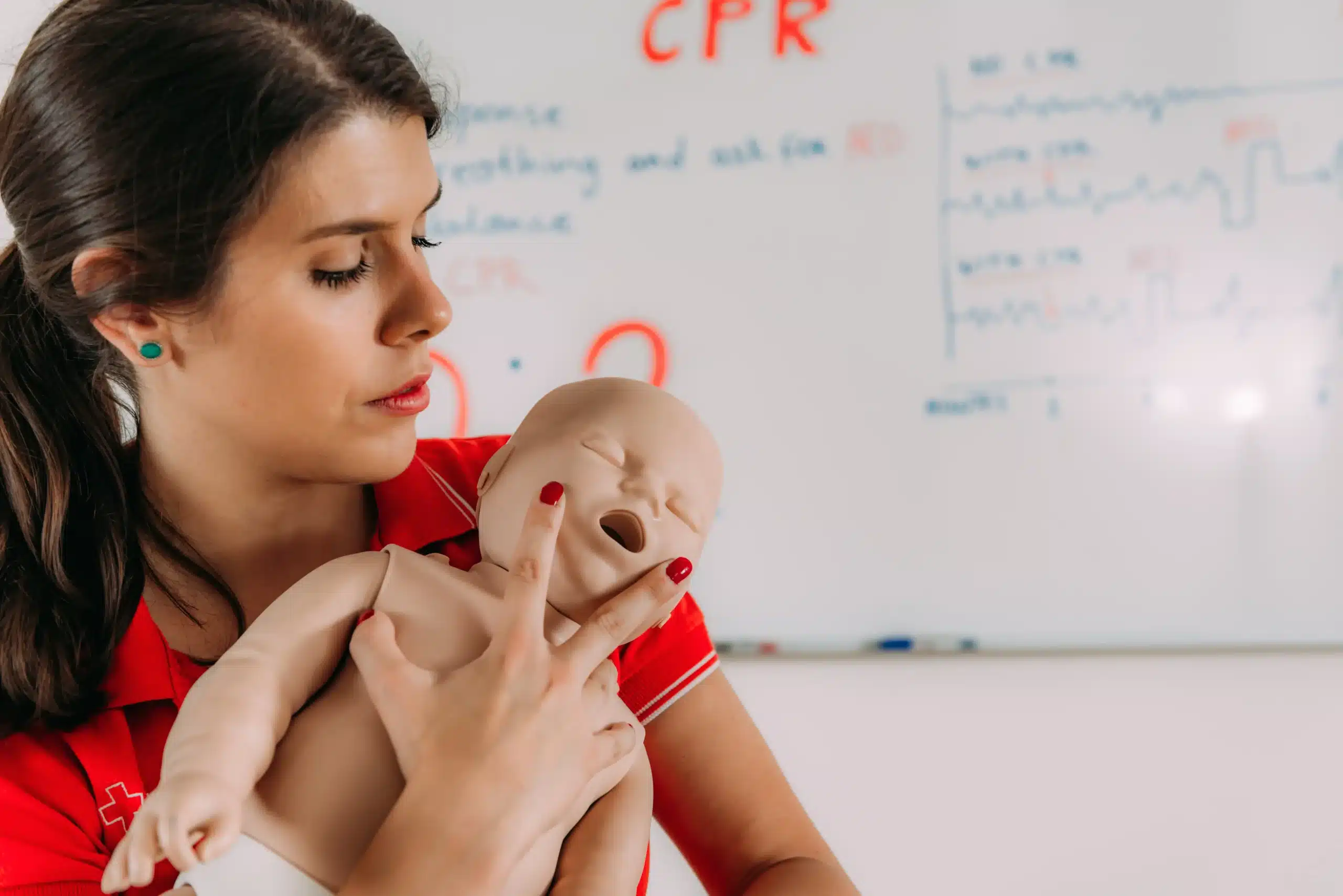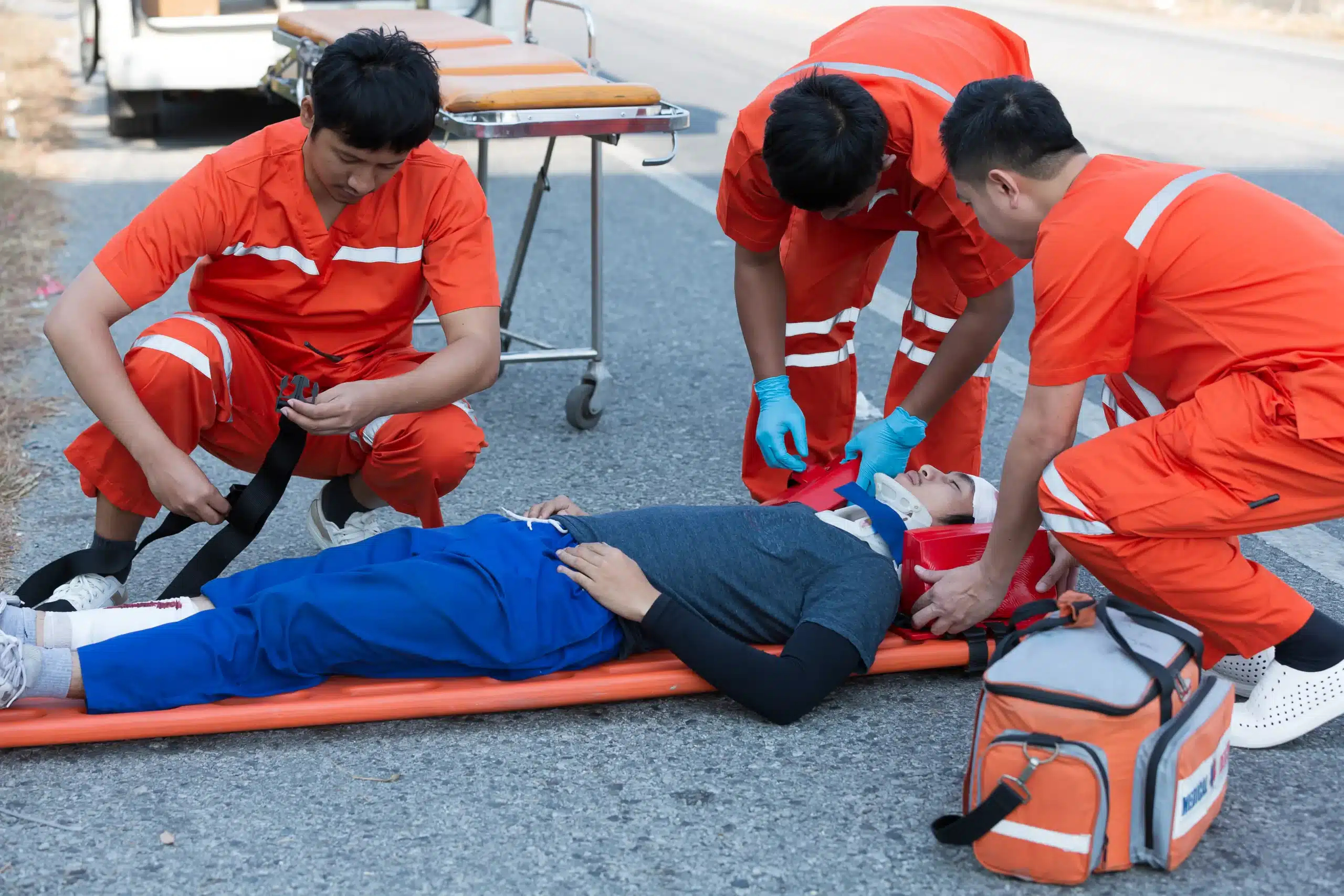Emergencies can happen anytime, anywhere. Being equipped with CPR skills can give you the confidence to respond effectively and potentially save a life. This guide will explore the world of CPR training, including how to locate CPR courses near me, and help you understand the different types of courses available. We’ll cover everything from basic CPR and First Aid to specialized training for healthcare providers and those working with children. We’ll also discuss how to choose a qualified instructor, what happens in a typical CPR class, and how to maintain your certification over time.
Key Takeaways
- Find the right CPR course for you: Whether you need basic CPR and First Aid or advanced training like BLS, ACLS, or PALS, understanding the different options helps you choose the best fit.
- Select a qualified CPR trainer: Look for instructors with real-world experience and certifications from reputable organizations like the American Heart Association. Check reviews and ask about their teaching style.
- Stay current with your CPR skills: Regularly refresh your knowledge and renew your certification to maintain your confidence and preparedness for emergencies.
What are the Different CPR Courses?
Choosing the right CPR course depends on your specific needs and goals. Whether you’re a healthcare professional, a childcare provider, or someone who wants to be prepared for emergencies, understanding the different types of CPR training available will help you make the right choice. Let’s explore the various CPR courses and certifications.
Types of CPR Training
Several organizations offer CPR training, with the American Heart Association (AHA) being one of the most widely recognized. AHA courses range from basic CPR and First Aid to more advanced certifications like Basic Life Support (BLS), Advanced Cardiovascular Life Support (ACLS), and Pediatric Advanced Life Support (PALS). These courses cover essential life-saving techniques, including CPR for adults, children, and infants, plus how to use an automated external defibrillator (AED). Safety Training Seminars offers a variety of courses to meet these needs, including CPR and First Aid certification. We also offer EMSA Child Care Health and Safety training for childcare providers in California.
Course Length & Certification
The length of a CPR course varies depending on the certification level. Basic CPR courses can often be completed in a single day, while more advanced certifications like BLS, ACLS, and PALS may require more time. The AHA offers the Resuscitation Quality Improvement (RQI) program, a popular and efficient option for healthcare professionals seeking BLS, ACLS, and PALS certification. It’s a streamlined approach that focuses on maintaining high-quality resuscitation skills. Remember that most CPR certifications are valid for two years and require renewal.
Costs & Discounts
CPR training costs vary based on the provider and the type of course. Safety Training Seminars offers competitive pricing on all our courses, and we encourage you to check our low price guarantee. We believe that cost shouldn’t prevent anyone from learning these vital skills. Many training providers also offer discounts for groups or organizations, so inquire about potential cost savings. Online renewal courses for certifications like ACLS can be more affordable and offer the flexibility of learning at your own pace.
How to Choose a CPR Trainer
Finding the right CPR trainer is just as important as the training itself. A great instructor can make all the difference in how well you learn and retain these lifesaving skills. Here’s what to look for:
Qualifications & Reputation
First, check the training center’s qualifications and reputation. Choose a center recognized by a reputable organization like the American Heart Association (AHA). This ensures the training meets national standards and your certification will be widely accepted. Reading online reviews can also give you a sense of other students’ experiences.
Instructor Credentials
Look for certified instructors with real-world experience. Experienced instructors can offer practical insights and answer your questions effectively. Their expertise goes beyond the textbook, giving you a richer learning experience.
Local Carmichael CPR Classes
If you’re in the Carmichael area, you have several excellent options for CPR training.
Safety Training Seminars
Safety Training Seminars offers various AHA-accredited CPR classes in Carmichael, including BLS, ACLS, PALS, and First Aid. Serving Carmichael, Rancho Cordova, and Fair Oaks, their convenient location makes it easy to find a class that fits your schedule. They are known for their commitment to excellent customer service and offer a low price guarantee.
American Heart Association
The American Heart Association sets the standard for CPR training. While they don’t directly teach classes, they certify training centers like Safety Training Seminars. This means you can trust the quality and consistency of the curriculum.
Red Cross
The Red Cross is another well-known provider of CPR training. They offer a range of courses, including CPR, AED, and First Aid. You can easily find Red Cross classes in most areas.
National Safety Council
The National Safety Council also offers CPR training through various approved providers. Their programs emphasize practical skills and the knowledge you need for effective emergency response.
American Safety & Health Institute
The American Safety & Health Institute (ASHI) provides guidelines for CPR training and certification. Many organizations offer courses based on ASHI standards, offering another reliable option for comprehensive training.
What Happens in a CPR Class?
Knowing what to expect can ease any nerves you might have about taking a CPR class. Here’s a general overview of a typical CPR course, like the ones offered by Safety Training Seminars in Carmichael.
Course Content & Skills
CPR classes cover the essentials of Basic Life Support (BLS), including recognizing the signs of a cardiac arrest and performing high-quality CPR for adults, children, and infants. You’ll learn how to use an Automated External Defibrillator (AED) and what to do if someone is choking. Many CPR courses, like those offered by the American Red Cross, also incorporate basic first aid training. This covers topics like wound care, treating burns, and managing allergic reactions. This prepares you to handle a wide range of emergencies.
Hands-on Practice & Equipment
CPR classes aren’t just lectures. Hands-on practice is key. You’ll work with realistic mannequins to practice chest compressions, rescue breaths, and AED use. This interactive training builds muscle memory and confidence, preparing you to act quickly and effectively in a real emergency. Instructors use training equipment like bag-valve masks and practice AEDs to simulate real-life scenarios. The Red Cross, for example, emphasizes this hands-on learning in their courses.
Assessment & Certification
Most CPR classes include a skills assessment at the end. This ensures you’ve mastered the techniques. You’ll demonstrate your CPR and AED skills on a mannequin. Upon successful completion, you’ll receive a CPR certification card, often the same day. This certification is typically valid for two years. Many organizations, including the American Red Cross, offer streamlined renewal courses when your certification is about to expire.
Specialized CPR Training
Beyond basic CPR certification, there are specialized courses designed for specific needs and professions. These courses often build upon the fundamentals of CPR and incorporate advanced techniques or considerations relevant to particular situations. Let’s explore a few key areas:
Healthcare Provider CPR
Healthcare providers, including doctors, nurses, paramedics, and other medical professionals, require a more advanced level of CPR training than the general public. Healthcare Provider CPR courses, such as the Basic Life Support (BLS) certification offered by Safety Training Seminars, cover a broader range of skills. These include two-rescuer CPR, bag-mask ventilation techniques, and the use of advanced airway devices. These courses emphasize a team-based approach to resuscitation and are essential for anyone working in a healthcare setting. The training provided by Safety Training Seminars aligns with the American Heart Association (AHA) guidelines for Healthcare Provider CPR, ensuring a standardized and high-quality approach.
Pediatric & Infant CPR
Working with children, whether as a parent, childcare provider, teacher, or coach, requires specialized knowledge of pediatric and infant CPR. Children’s bodies are different from adults, and their resuscitation needs differ as well. Pediatric CPR courses teach how to respond to emergencies involving infants and children. They cover choking rescue techniques, age-appropriate CPR methods, and how to recognize the signs of respiratory distress in young children. Safety Training Seminars offers courses that meet industry requirements for childcare providers, giving you the confidence to act quickly and effectively in a pediatric emergency.
Workplace CPR
Many workplaces require employees to have CPR certification to ensure a safe working environment. Workplace CPR training often combines general CPR skills with additional training relevant to specific workplace hazards. For example, construction workers might receive training on responding to electrical shocks or falls, while office workers might learn how to use an automated external defibrillator (AED). These courses are tailored to meet occupational safety standards and empower employees to handle emergencies effectively, minimizing workplace risks.
How to Maintain Your CPR Certification
Once you’re CPR certified, staying current on your training is key. Knowing you’re prepared to handle an emergency brings confidence and peace of mind. Here’s how to maintain your CPR skills and keep your certification valid:
Renewing Your Certification
CPR certifications are typically valid for two years. It’s essential to renew your CPR certification before it expires to maintain your qualifications. Many organizations, like the American Heart Association and Red Cross, offer abbreviated renewal courses for those whose certifications are close to expiring. Check with your certifying organization for specific renewal requirements and sign up for a class well before your expiration date. Staying proactive ensures you’re always ready to respond effectively in an emergency.
Continuing Education
After your initial CPR training, take advantage of available resources to reinforce what you’ve learned. Many training providers offer supplemental materials, including online modules, practice scenarios, and printable guides. The Red Cross offers a range of these resources to help students refresh their knowledge and skills. Regularly reviewing these materials will significantly improve your retention and make your renewal course that much easier.
Keeping Your Skills Sharp
Even with regular renewals, consistent practice is crucial for maintaining CPR proficiency. Think of it like any other skill—the more you use it, the more confident and effective you become. Consider practicing with a friend or family member, or visualize different emergency scenarios and how you would respond. These simple steps can make a significant difference in your preparedness and ability to act quickly and confidently when it matters most. The Red Cross recommends reviewing refresher materials every three months to keep your skills sharp.
Related Articles
- CPR Courses in Carmichael: Your Certification Guide – Carmichael CPR Classes
- Online CPR Classes in Carmichael: Your Guide – Carmichael CPR Classes
- CPR Training in Rancho Cordova: Your Guide – Carmichael CPR Classes
- Carmichael CPR Certification: Your Guide – Carmichael CPR Classes
Frequently Asked Questions
How do I choose between CPR and First Aid training?
It depends on your needs. If you’re looking for comprehensive emergency preparedness, combining CPR and First Aid is a great option. CPR focuses on life-threatening situations like cardiac arrest, while First Aid addresses injuries like cuts, burns, and fractures. If your workplace or profession requires a specific certification, clarify those requirements before registering for a course.
What if I’m nervous about the skills assessment in the CPR class?
It’s completely normal to feel a little nervous, but CPR instructors create a supportive learning environment. The skills assessment isn’t about passing or failing; it’s about ensuring you’ve grasped the techniques. Practice throughout the course and ask your instructor any questions you have. They are there to help you succeed.
Are online CPR certifications accepted?
While online courses offer convenience, many organizations and employers prefer certifications from hands-on training providers like Safety Training Seminars or the American Red Cross. Hands-on training allows for real-time feedback from instructors and practice with mannequins and AEDs, which is crucial for developing the muscle memory and confidence needed to perform CPR effectively in a real emergency. Always check with your employer or licensing board to confirm their CPR certification requirements.
What if I let my CPR certification expire?
If your certification expires, you’ll need to retake a CPR course to become recertified. Don’t wait until the last minute. Sign up for a renewal course well in advance of your expiration date to ensure continuous coverage. Many providers offer streamlined renewal courses for those whose certifications are close to expiring.
How often should I refresh my CPR skills, even if my certification is still valid?
Regularly reviewing the material and practicing your skills is highly recommended, even if your certification hasn’t expired yet. Consider refreshing your knowledge every few months to keep the information and techniques fresh in your mind. This will boost your confidence and ensure you’re always prepared to respond effectively in an emergency.


